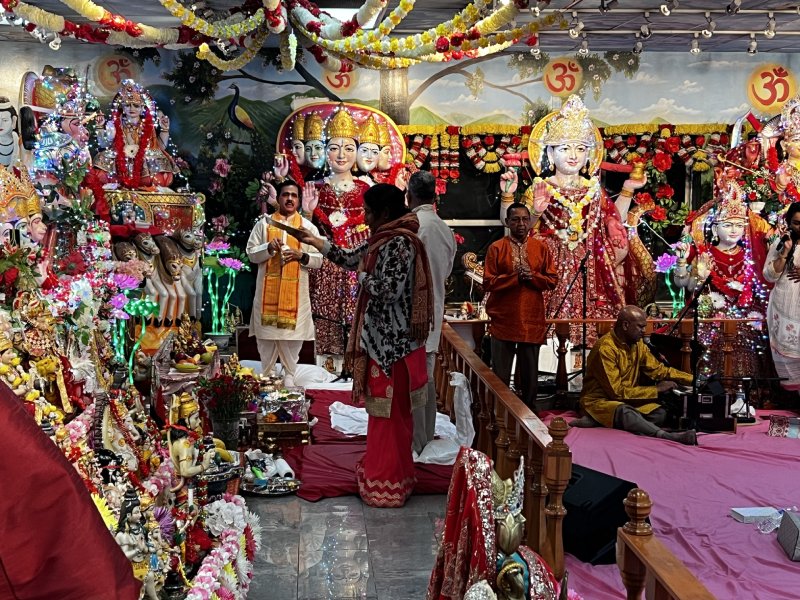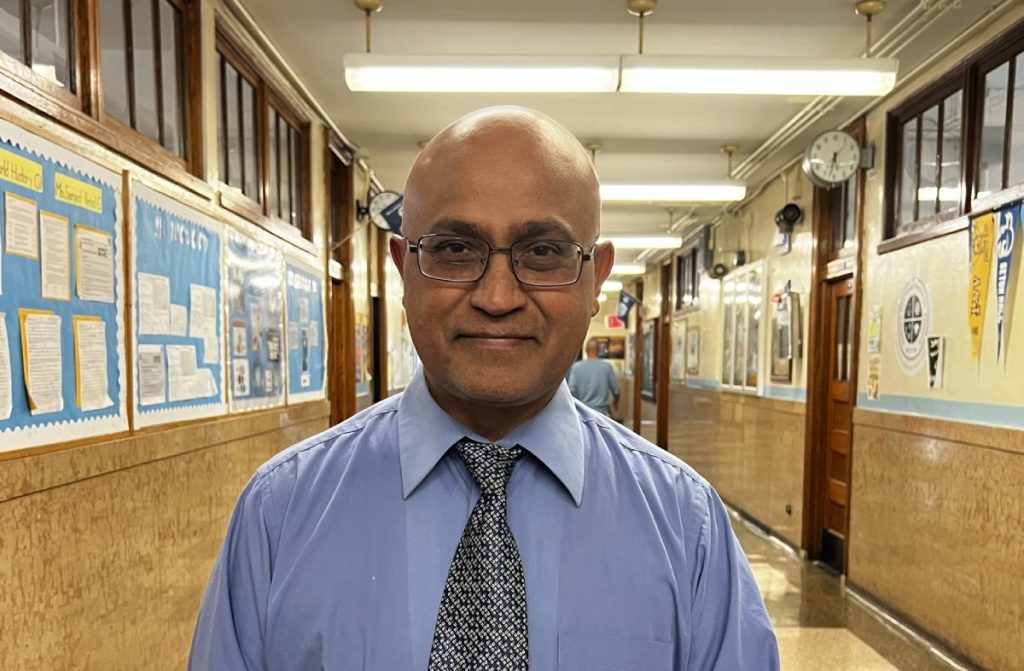Indo-Caribbean American Hindus observed Navratri from April 9 thru 17 with puja at home and Mandirs. Navratri is nine nights of worshiping the Goddesses or Devis; some mandirs ended service Tuesday night April 16. It is a very auspicious Hindu festival during which Hindus pray with utmost devotion. Like in the Caribbean, Guyanese, Trinidadian, and other Caribbean Temples in America held Ramayana sessions or Devi Bhagwatam nightly during this period, and many Hindus have been conducting poojas or yajnas at their home or business. They continue a tradition they practiced in Guyana, Trinidad, and Suriname.
Every mandir in America held services for Navratri. Some had nightly puja and discourse from the holy texts. Others had puja on selected nights including the first and last night. In New York, temples held nightly discourses from the holy pages of Hindu scriptures. The pious period concluded with the celebration of Ram Naumi or the birth of Lord Rama. Temples were packed nightly for services on the occasion.
Navratri is the worshipping of the Goddess Durga and two other Goddesses Saraswati and Lakshmi. This is one of the most auspicious periods in the Hindu calendar and during this time the feminine aspects of God are stressed and worshipped. But it is important to note that in Hinduism, God is neither male nor female. Gods as well as Goddesses are worshipped and for every God there is a corresponding Goddess as his consort. Hindus pray to both male and female aspects of the lord. So, Hindus do not discriminate between the genders. In fact, Lord Krishna is quoted in the Bhagavad Gita as saying that God is neither male nor female. “I am the father and mother”, suggesting that God transcends gender. Also, when Hindus pray, they always pay obeisance to their mother and father and at every pooja they aarti both parents and elderly males and females.
According to the pandits, Hindus worship Durga because she is the collective manifestation of Brahma (creator), Vishnu (preserver), and Shiva (destroyer). Thus, when people worship Durga, they are worshipping the other manifestations of God. People worship for protection, education and prosperity and Goddesses Durga, Saraswati and Laxmi offer divine protection, knowledge and wealth as well as the removal of disease. Three nights each are spent on each of the Goddesses.
“Navratri” signals the beginning of a new season, the beginning of Spring season or the Fall season. People begin the seasons with new inspiration and new enthusiasm and are often confronted with challenges and illnesses. They pay obeisance to the universal mother for healthy life, prosperity and protection. So they pray and make offerings for good health during the change in the seasons.
Navratri is also associated with Lord Rama. During the spring navratri, Hindus celebrate Ram Naumi (the birth or appearance) of Lord Rama and in the Fall navratri, Hindus celebrate the destruction of the evil Ravana by Lord Rama, signifying the triumph of good over evil.
Navratri is an auspicious time to conduct poojas or to get married. So during navratri, it is traditional for Hindus to invite priests to conduct pujas in their homes or visit the temples where there is usually a nightly discourse from the Ramayana. Many Hindus conducted puja at their home or place of business. Worshippers tend to fast for the entire period, avoiding meat, sex, fish, eggs, and they maintain cleanliness in the homes for almost two weeks. People fasted during this period focusing on purification of the minds and bodies. During this period, people tend to pray with great fervour and devotion. And Hindus were seen nightly dressed in traditional colourful garb heading for the mandirs in the greater Richmond Hill area. Other mandirs also conducted services.

This tradition is a continuation of the practice inherited from Hindu ancestors going back to 1838 when they first arrived in then British Guiana, Trinidad, and Suriname, as indentured labourers. And Indo-Caribbean Hindus continue the tradition of observing Navratri and other festivals in New York, New Jersey, Florida, Minnesota, Georgia, Texas and other places where they have settled. Other Hindus joined Indo-Caribbeans in observing the Navratri.
Guyanese and Trinis have helped to institutionalise Navratri and other Hindu as festivals in different parts of America. They receive support and recognition from politicians.
The poojas in the mandir were accompanied with a pravachan or discourse and by bhajan and kirtan singing. Following pooja, there was aartee and bhojan.
